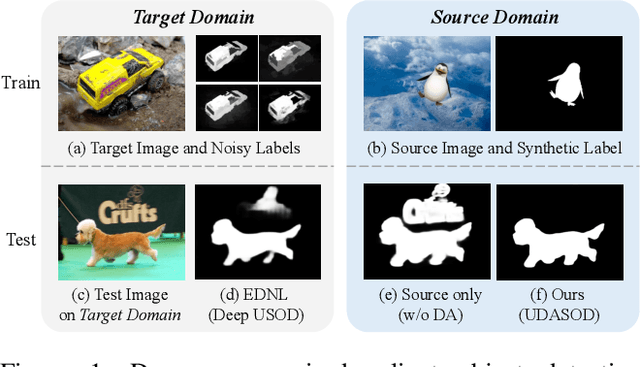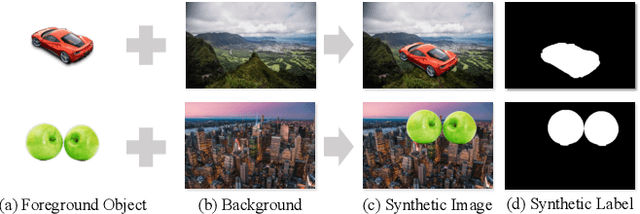Unsupervised Domain Adaptive Salient Object Detection Through Uncertainty-Aware Pseudo-Label Learning
Paper and Code
Feb 26, 2022



Recent advances in deep learning significantly boost the performance of salient object detection (SOD) at the expense of labeling larger-scale per-pixel annotations. To relieve the burden of labor-intensive labeling, deep unsupervised SOD methods have been proposed to exploit noisy labels generated by handcrafted saliency methods. However, it is still difficult to learn accurate saliency details from rough noisy labels. In this paper, we propose to learn saliency from synthetic but clean labels, which naturally has higher pixel-labeling quality without the effort of manual annotations. Specifically, we first construct a novel synthetic SOD dataset by a simple copy-paste strategy. Considering the large appearance differences between the synthetic and real-world scenarios, directly training with synthetic data will lead to performance degradation on real-world scenarios. To mitigate this problem, we propose a novel unsupervised domain adaptive SOD method to adapt between these two domains by uncertainty-aware self-training. Experimental results show that our proposed method outperforms the existing state-of-the-art deep unsupervised SOD methods on several benchmark datasets, and is even comparable to fully-supervised ones.
 Add to Chrome
Add to Chrome Add to Firefox
Add to Firefox Add to Edge
Add to Edge